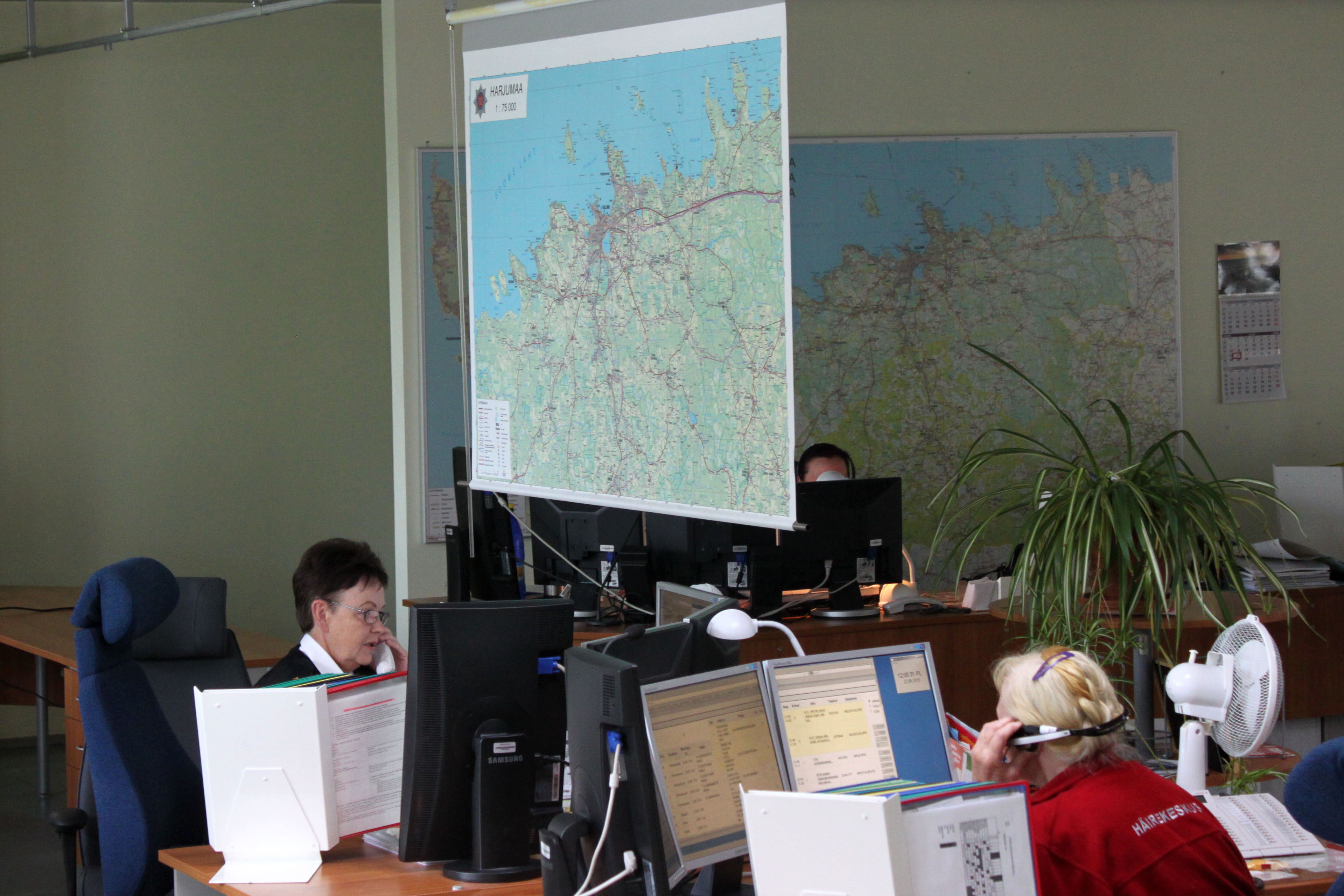Estonia’s emergency service dials Swiss number

The control rooms and rescue services of Estonia are being updated and optimised for speed and efficiency with Swiss funds to boost cohesion within the European Union.
The Baltic republic’s emergency response system is hampered by outdated technology and a fragmented structure. To make matters worse, vast tracts of the country are only sparsely populated.
“If someone drives from Tallinn to Tartu and has an accident in the forest, he won’t know where he or she is,” says Rivo Salong, the project leader for the reform of the Estonian emergency response system.
“Outside the capital, we have many large forests but almost no houses.”
The improvements focus on the introduction of a standard emergency number for the police, fire brigade and rescue services, and the computerisation of the control rooms and the vehicles.
Switzerland is contributing SFr 3.3 million ($3.1 million) to the reform of the Estonian emergency response and ambulance system.
It is part of its enlargement contribution that aims to reduce the social and economic disadvantages of the new EU member countries. The money will be spent on computers, servers and software as well as training.
At present, ambulances are in contact with the control by radio.
If the head of operations wants to send an ambulance to an emergency situation, he must first find out exactly where the emergency is taking place and where the closest ambulance is.
Standard number
This is time consuming and quite unreliable.
“Sometimes ambulance drivers only find the location after a long search because new districts or streets are not yet shown on any maps,” says Salong.
Efficient coordination of the rescue forces is also made difficult by the fact that the police have their own emergency number and control rooms.
In future there will be only one number and four control rooms spread across the country. This was recently decided by the Estonian parliament after lengthy discussions.
Moreover, a new building will be constructed for Tallinn – the country’s most populated region by far.
“By 2014 there will definitely be only one number,” says Salong smiling. “Until then we have time to train our staff and to merge the two different working cultures and mentalities.”
The main differences between the working cultures of the police and the other services is that the police are more decentralised and their deployment policy is less clearly regulated, he says.
State-of-the-art
The centralisation comes hand-in-hand with the computerisation of the emergency response system. The old maps will be replaced by digital maps that will be updated continuously.
New software will also permit the callers’ positions to be pinpointed.
“This way we will know immediately where the accident happened. At the same time, the digital map will show the current locations of the response vehicles,” Salong explains.
The vehicles are located by GPS, and the telephone service provider will provide the caller’s location, even if the call is made from a mobile phone.
Computer knows
The response vehicles are equipped with modern computers and wireless internet.
The technology enables the fire brigade’s rescue team to find out any time when the ambulance or police are due to arrive on the scene. The head of operations in the call centre coordinates the deployment.
As a result patients and accident victims will also be provided with better medical care in future.
At present, the paramedics enter the patient data and any medical procedures administered in the ambulance on a form. Hospital staff then have to type the hand-written patient information into the hospital database.
“This is very time-consuming and an unnecessary duplication of work,” says project leader Katrin Rahu.
In future, the paramedic will enter the data straight into the system, and hospital staff will have access to it even before the ambulance arrives and be able to prepare the necessary medical procedures.
“This will enable us to make considerable improvements to the ambulance service,” Rahu notes.
The authorities hope the new digital emergency system will be operational by 2012.
Andreas Keiser in Tallinn, swissinfo.ch (adapted from German by Urs Geiser)
The EU cohesion fund is aimed at member states whose Gross National Income (GNI) per inhabitant is less than 90% of the union’s average.
Switzerland’s contribution is implemented autonomously and is not part of the EU’s cohesion policy.
The cohesion fund finances activities under the following categories: trans-European transport networks and environment, including energy efficiency, renewable energy.
Switzerland is not a member of the EU.
But as part of a second set of bilateral treaties with Brussels, it pledged SFr1 billion ($950 million) to the ten new EU member states mainly in eastern Europe.
Swiss voters endorsed the government plan in a nationwide vote in 2006.
Bulgaria and Romania which joined the EU in 2007 also benefit from Swiss funds.
A total of SFr39 million will be spent on projects in Estonia by 2012.
The Swiss contribution is part of efforts to reduce social and economic disparities in the enlarged EU and to ensure security, stability and prosperity throughout the continent.

In compliance with the JTI standards
More: SWI swissinfo.ch certified by the Journalism Trust Initiative














You can find an overview of ongoing debates with our journalists here . Please join us!
If you want to start a conversation about a topic raised in this article or want to report factual errors, email us at english@swissinfo.ch.